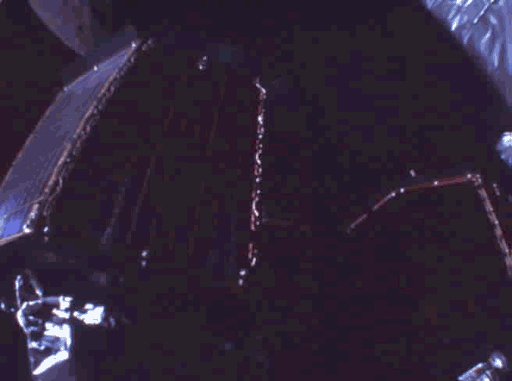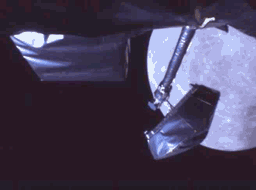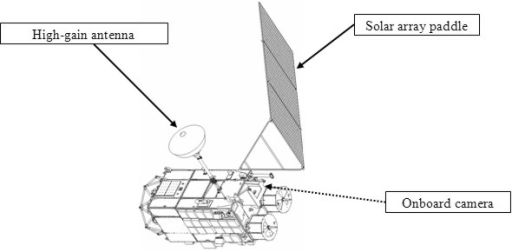Emily Lakdawalla • Oct 09, 2007
Kaguya: First of two mini-satellites successfully deployed
I'm taking a coffee break from sessions at DPS and just came across the news that Kaguya, the Japanese lunar orbiter also known as SELENE, has just successfully released the first of two mini-satellites. Even cooler, their onboard camera recorded the separation:

JAXA
Kaguya: successful deployment of Rstar satellite
The lunar orbiter Kaguya carried two microsatellites to be deployed in their own orbits. This animation documents the successful separation of the first of these, caled Rstar. In the first image, the octagonal prism of Rstar is visible on the left; in the second image, the bottom of the Rstar microsatellite can faintly be seen toward the top, and the VRAD satellite is revealed on the right side, still attached to the spacecraft. Confusing the image a little bit is that the lunar limb appears in the upper left of the first frame, when Rstar is still attached to Kaguya, but has disappeared in the second frame. The deployment happened on October 9, 2007 at 00:36 UTC.
JAXA
Kaguya approaches the Moon
The three images in this animation were taken 10 minutes apart, from 05:50 to 06:10 UTC on October 5, 2007, as Kaguya approached the Moon in its elliptical orbit. The high-gain antenna is on the right side of this image, and the foil-wrapped box on the right side is part of Kaguya's X-ray spectrometer instrument.JAXA has had a lot of successes in their planetary exploration program, but they tend to be mixed with stories of overcoming incredible challenges. So far, this mission has been ho-hum routine, which I'm sure is a great relief to anyone who works in Japan's space program. Let's all keep our fingers crossed for their continued good luck with the last tricky maneuvers that have to be performed before Kaguya can start its science operations at the Moon! There's still one more mini-satellite to release, and that's supposed to happen on October 14; science orbit, 100 kilometers above the Moon, should be achieved on October 21.
For a little more Kaguya fun, you can read an English translation of a Japanese transcript of a press conference held October 5, after the successful lunar orbit insertion. It contains information that the first HDTV images of the moon should be taken on October 19, when they have entered lunar orbit -- which is two days earlier than I thought they were entering lunar orbit. I need to dig in to those dates and see which one is correct.
The Time is Now.
As a Planetary Defender, you’re part of our mission to decrease the risk of Earth being hit by an asteroid or comet.
Donate Today

 Explore Worlds
Explore Worlds Find Life
Find Life Defend Earth
Defend Earth


